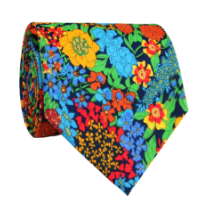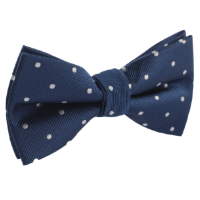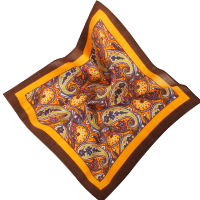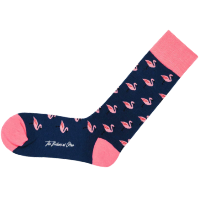Different Types of Fabric – The Ultimate Textile Guide
Textile Origin
Egypt

Embark on a journey that will lead you to understand the special properties of Egyptian cotton and why it is becoming increasingly popular in today's fashion. Egyptian cotton has existed since the time of the Pharaohs. It has earned the King of Cotton title due to its special properties. Let's explore the origins and use of Egyptian cotton.
Egyptian cotton is one of the most coveted textile fibers. It is cataloged among the finest and most exclusive of the world and gives rise to fabrics of an incomparable softness, the most similar to silk. All the garments made in this material are characterized by their high quality, so much so that the best designers choose this cotton to make their most quoted garments.
India

The dress in India is usually made with cotton, chiffon, and silk of several colors. But in general, clothing is conditioned to climatic and geographical factors, as well as cultural factors to which it belongs, mainly related to the clothing material and ornaments. At the same time, no other region in the world offers greater creativity in the production of textiles than the Indian Subcontinent. The interaction of invaders, indigenous tribes, merchants and explorers over the years has built a complex and legendary textile culture characterized by its vitality and color, composed today by more than 10 million weavers, dyers, and embroiderers.
Italy
Velvet Textiles:

Venice, Florence, and Genoa have traditionally been recognized as the most important Italian centers of high-quality velvet production. More recently, the importance of the Milanese silk industry, which began in the mid-fifteenth century under the patronage of the Visconti and Sforza Dukes, has also been recognized. During the Renaissance, luxurious fabrics made of silk and precious metal threads counted among the most valuable items owned by both individuals and the Church. The precise meaning of some of the motifs that held special significance during the Renaissance has been lost over time.
British

Needle fabric was introduced in Europe by the Arabs in the fifth century and flourished in England and Scotland during the fourteenth and fifteenth centuries, although the Scots have claimed so much its invention as its introduction in France. Legend has it, an English priest, William Lee, invented the knitting machine.
China

Silk is an exclusively Chinese invention. For a long time, China was the only country in the world that produced and used silk fabrics. Chinese silk is not only famous for its exquisite design, but also for its brilliance and fineness.
Types of Fabric
Cotton

The considerable advantage of the use of cotton is its undeniable lightness. Worked in different ways such as moleskin, seersucker or velvet, cotton brings a casual side to a complete suit. Thus, it is easy to wear it unpaired. The other advantage of cotton is its great breathability which irrevocably associates it with the summer season. It will, therefore, be better to choose a two-piece with a restructured jacket in order to get a dressed and casual look. Cotton is cheaper than wool. A cotton suit is, therefore, more affordable than a wool suit and practical to embellish your summer dressing! The only notable deficiency of cotton is that it is difficult to withstand contact with water and other liquids. If you are cotton lover then avoid throwing yourself dressed in a swimming pool.
Silk

Silk counts to the strongest natural fabric in the world! Because of its price, silk is only used to make a costume for mixtures, mainly wool or cotton. Thus it is almost impossible to find 100% silk suits. The silk adds shine and fluidity to the fabric. Thus, the fabric takes on more light and therefore makes it possible to obtain reflections. Therefore, silk is preferred for costumes and other evening jackets. Silk may be an excellent element to achieving a good suit, whether in winter or in summer.
Linen

Linen is the King of natural fabric and undoubtedly the flagship material for warm and humid climates. Rugged and light, linen is crumpled quickly. It is portable in a very formal way, the linen imposes a certain relaxation. Forget about any superfluous accessory like a tie: the linen only accepts the silk pouch.
Wool

It is undoubtedly the best material for suiting. However, a 100% wool suit will not guarantee a good formal suit with impeccable rendering. It is also the material that can be used both in winter and in summer (choice is yours). It will then be a matter of monitoring the weight, expressed in ounces, in order to know for which season the suit is intended. A suit of 16oz, for example, will be perfect to follow you all the winter: it will keep you warm without suffocating you. In short, wool is available in different types, all suitable for a particular situation.
Leather

There is no doubt that the leather jacket or a coat for men are those clothes that you can wear one and a thousand times without tiring, and authentic essential to stand against the cold and give that rebellious touch to your looks. Irreverent spirit and rebel past, leather has become an off-road garment capable of turning any look into what is incorporated, whether present with studs, have a cocoon silhouette or multiply their zippers.
Ramie

The ramie fiber is white with a silky sheen, similar to linen in absorption and density, but more sufficient (25 to 30 microns). It is one of the strongest natural fibers and has low elasticity and dyes easily. The ramie shavings are about 190 centimeters in length, with individual cells as long as 40 centimeters. The transverse cracks in the fiber that make the ramie brittle favor ventilation. Not widely known outside of the East Asian countries that produce it, the ramie is light, silky and made for summer.
Hemp

Hemp is the oldest fiber used by man. The first fossil fragments of strings and knots in general, date from 15,000 to 17,000 years, so this simple technology is prior to the ax and the wheel. Hemp fiber conducts heat, dyes well resist mildew, blocks ultraviolet light and has natural antibacterial properties.
Imagine a type of fabric that provides warmth at the same time as softness. It maintains the temperature in winter and at the same time is cool and breathable in summer. It has great durability while being sustainable and does not require chemicals. A type of fabric that is so versatile that it can be used in clothing, furniture, accessories, shoes, home textile or home construction. Imagine that this type of tissue exists. Now stop imagining and open your eyes. This type of tissue exists and is called hemp.
Compared to cotton, hemp fiber has greater heat resistance and better absorption and dispersion of moisture, while its high rate of toxic gas absorption makes it excellent for use in home textiles. Mixed with silk has nothing to envy other types of fabric.
Jute

The "golden fiber" jute is long, soft and shiny, with a length of one to four meters and a diameter of between 17 to 20 microns. It is one of the strongest natural plant fibers and is second only to cotton in terms of the amount of production. Jute has highly insulating and anti-static properties, moderate moisture reabsorption and low thermal conductivity. Its strong fiber strands are used to make bags and contribute to the livelihoods of millions of small farmers.
Conclusion:
It is impossible to pinpoint the exact time when knitted fabric came into being. There are various fabrics which are mixed with different materials to create the best designs and costumes!






